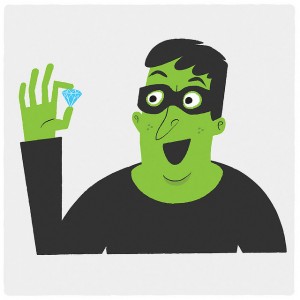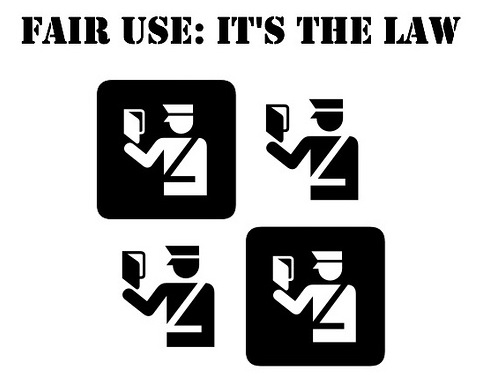In a blogging world, it is very rare for bloggers to only use their own images and own thoughts. At one point or another, you will be using images in your blog posts, that you came across elsewhere. You may also be using another blogger’s awesome quotes or data. And if you’re not aware of the citation rules or blogging etiquette, you may be accused of content theft. Even though you weren’t aware that you were “stealing” someone else’s hard work.
Content theft is, obviously, not cool. Whether it’s an image you’re using, or quoting someone else in your blog post, or perhaps you want to use a short paragraph in your blog post, it is necessary to give the other person credit in your blog post. Let’s go over a few details you need to know about giving credit to others for using their written or visual content.

How to cite a short quote from another blog post
There’s a clear difference between citing another blogger and simply using their material as your own thoughts. If you don’t cite someone else’s work the right way, you may be accused of stealing content to grow your own business. Who would want that to happen?
Of course, you can put quotation marks around the quote and call it a day, but that would violate blogging etiquette. Here’s how we quoted another person in one of our recent blog posts on questions that define your blogging strategy:

To quote another person properly, you need to mention the name of the author, along with the name of their blog. Last but not least, you always have to include a link to their website (original blog post). This would show that you aren’t just using their content for your own good, but also including an inbound link.
Fair Use and Other Vague Terms
The moment another blogger publishes their content, it becomes covered by the Copyright Law. It means that the content belongs to them. However, we are allowed to legally use other people’s content, as long as we comply with the guidelines and “fair use”. What does that mean? As a person, who wants to use a part of their content, you are allowed to use it for multiple purposes. These include research and news reporting, among other non-profit purposes.
But you will be opposing fair use if you will be using content for commercial purposes, or denying credit to original author. “Fair use” is a vague term though, a so-called gray area of the copyright laws. Before using any content that isn’t your own, the best thing to do is simply ask the author to give you permission. Once they say that it’s OK to use their work, you may go ahead and use their quote in your blog, while still including a link to the original post.

Can’t I Just Copy an Entire Paragraph?
This is a tricky part. For instance, you were reading another person’s blog, and came across a paragraph that could be of great use in your next best blog post. It describes the topic perfectly, and you realize that you must include that part in your blog post. However, you should be careful when using longer pieces of content. Ideally, you must get familiar with content usage guidelines. Plenty of blogs have those, and they vary from one blog to another. HubSpot’s Content Usage Guidelines gives us a clear idea of what restrictions you may come across when sharing other people’s content. Typically, if your blog post contains a part form someone else that is 75 words or less, you should be OK. However, if you still have your doubts – do what is right and ask the author!
Whether you’re quoting the author or using data found elsewhere, remember to include the link to the original source, if it’s available. Be mindful of blog policies, or content attribution policies. And remember that many blogs will not be very happy if you decide to quote a very long piece of content because duplicate content will affect SEO (not in a good way). It is always better to seek for blogging inspiration than to blatantly copy others.
What About Visual Content?
Visual content is protected by copyright laws, just like any other type of content. Using visuals in your blog without giving credit is by all means illegal. There is more than one way to ensure that you are using the image without violating any policies and rules. As you may have already guessed, one of them is to ask permission. Citing an infographic is really not any different from citing written content you found on someone else’s blog. Include the author’s name and link the readers to the original source of the infographic.
Give Credit Or Else…
It is always better to show respect and play fair. What happens when you use another person’s content without giving them the necessary props? Well, as you may have guessed, the author of the content will become upset. To the point where he or she would want to reinstate justice and stop you from taking their content without permission. The author may ask you to remove the content, or rewrite the content, including the original author’s name and a link to his website. In some cases they may even ask for compensation.
Have you had to deal with plagiarism before? What steps do you take to stay out of legal trouble when citing someone else’s content?
Main photo credit: Scott Beale via photopin cc




